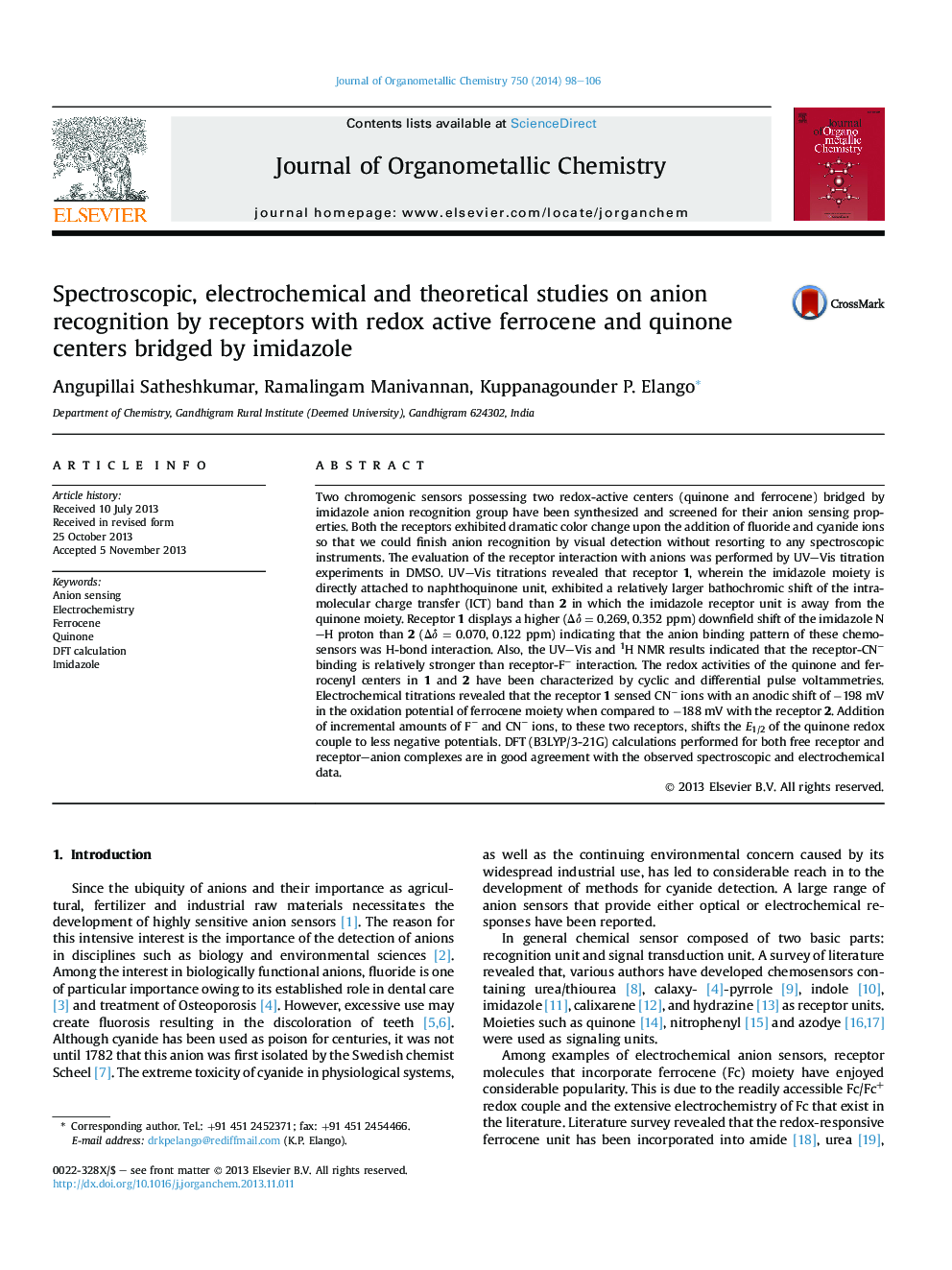| Article ID | Journal | Published Year | Pages | File Type |
|---|---|---|---|---|
| 1322551 | Journal of Organometallic Chemistry | 2014 | 9 Pages |
•A new receptor possessing two redox active centers together.•Detailed electrochemistry of the two redox active centers has been reported.•Ferrocene and quinone centers exhibited well separated redox cycles.
Two chromogenic sensors possessing two redox-active centers (quinone and ferrocene) bridged by imidazole anion recognition group have been synthesized and screened for their anion sensing properties. Both the receptors exhibited dramatic color change upon the addition of fluoride and cyanide ions so that we could finish anion recognition by visual detection without resorting to any spectroscopic instruments. The evaluation of the receptor interaction with anions was performed by UV–Vis titration experiments in DMSO. UV–Vis titrations revealed that receptor 1, wherein the imidazole moiety is directly attached to naphthoquinone unit, exhibited a relatively larger bathochromic shift of the intramolecular charge transfer (ICT) band than 2 in which the imidazole receptor unit is away from the quinone moiety. Receptor 1 displays a higher (Δδ = 0.269, 0.352 ppm) downfield shift of the imidazole N–H proton than 2 (Δδ = 0.070, 0.122 ppm) indicating that the anion binding pattern of these chemosensors was H-bond interaction. Also, the UV–Vis and 1H NMR results indicated that the receptor-CN− binding is relatively stronger than receptor-F− interaction. The redox activities of the quinone and ferrocenyl centers in 1 and 2 have been characterized by cyclic and differential pulse voltammetries. Electrochemical titrations revealed that the receptor 1 sensed CN− ions with an anodic shift of −198 mV in the oxidation potential of ferrocene moiety when compared to −188 mV with the receptor 2. Addition of incremental amounts of F− and CN− ions, to these two receptors, shifts the E1/2 of the quinone redox couple to less negative potentials. DFT (B3LYP/3-21G) calculations performed for both free receptor and receptor–anion complexes are in good agreement with the observed spectroscopic and electrochemical data.
Graphical abstractTwo chromogenic sensors possessing two redox-active centers (quinone and ferrocene) bridged by imidazole anion recognition group have been synthesized and screened for their anion sensing properties.Figure optionsDownload full-size imageDownload as PowerPoint slide
